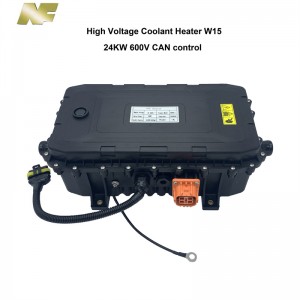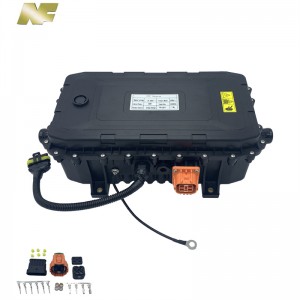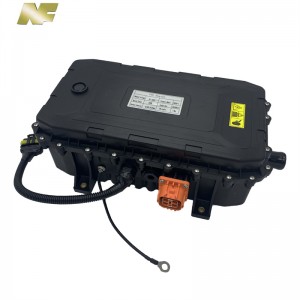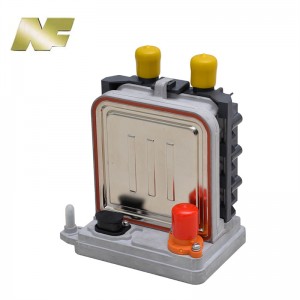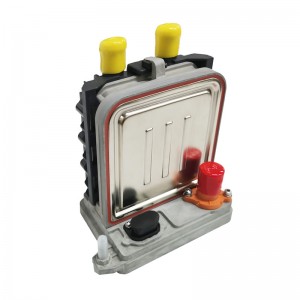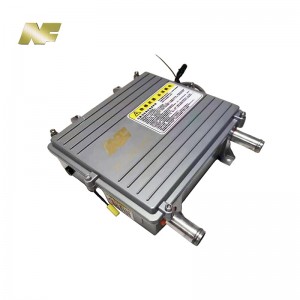NF 24KW DC600V High Voltage Coolant Heater DC24V HV Coolant Heater
Description
The heater is mainly used for heating the passenger compartment ,defrosting and removing fog on the window,or preheating battery thermal management system battery ,to meet the corresponding regulations, functional requirements.
The main functions of the integrated circuit water heating heater are:
- Control function: The heater control mode is power control and temperature control;
- Heating function: Electrical energy conversion to thermal energy;
- Interface function: Heating module and control module energy input, signal module input, grounding,water inlet and water outlet .
Technical Parameter
| Parameter | Description | Condition | Minimum value | Rated value | Maximum value | Unit |
| Pn el. | Power | Nominal working condition:
Un = 600 V Tcoolant In= 40 °C Qcoolant = 40 L/min Coolant=50:50 |
21600 | 24000 | 26400 | W |
| m | Weight | Net weight (no coolant) | 7000 | 7500 | 8000 | g |
| Toperating | Work temperature (environment) | -40 | 110 | °C | ||
| Tstorage | Storage temperature (environment) | -40 | 120 | °C | ||
| Tcoolant | Coolant temperature | -40 | 85 | °C | ||
| UKl15/Kl30 | Power supply voltage | 16 | 24 | 32 | V | |
| UHV+/HV- | Power supply voltage | Unrestricted power | 400 | 600 | 750 | V |
Packaging & Shipping


Advantage
1. Life cycle of 8 years or 200,000 kilometers;
2. The accumulated heating time in the life cycle can reach up to 8000 hours;
3. In the power-on state, the working time of the heater can reach up to 10,000 hours (Communication is the working state);
4. Up to 50,000 power cycles;
5. The heater can be connected to constant electricity at low voltage during the whole life cycle. (Usually ,when the battery is not depleted; the heater will go into sleep mode after the car is turned off);
6. Provide high-voltage power to the heater when starting the vehicle heating mode;
7. The heater can be arranged in the engine room, but it cannot be placed within 75mm of the parts that continuously generate heat and the temperature exceeds 120℃.
Application

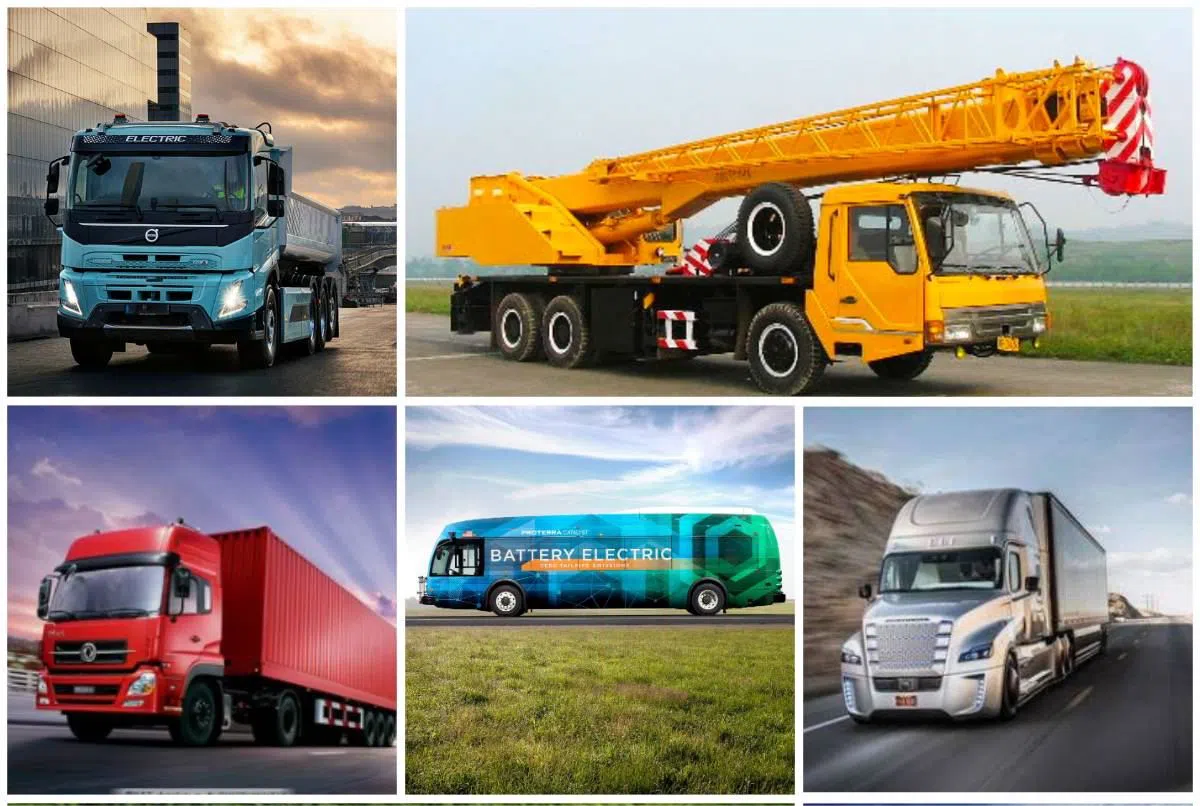
Our Company
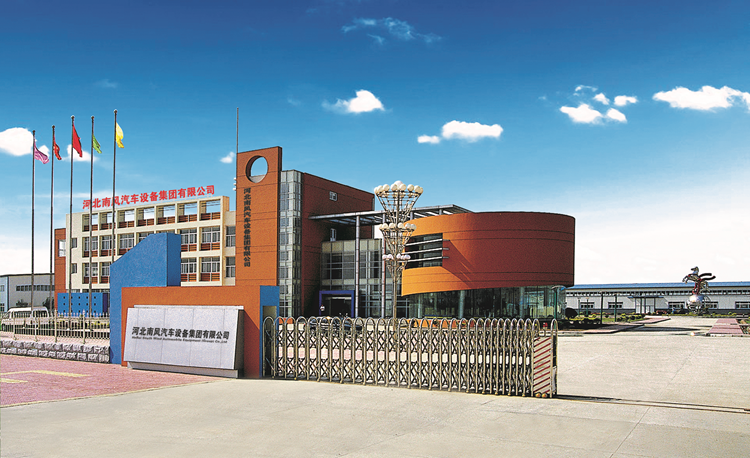

Hebei Nanfeng Automobile Equipment (Group) Co., Ltd is a group company with 5 factories, that specially produce parking heaters, heater parts, air conditioner and electric vehicle parts for more than 30 years. We are the leading auto parts manufacturers in China.
Our factory's production units are equipped with high tech machineries, strict quality,control testing devices and a team of professional technicians and engineers endorsing the quality and authenticity of our products.
In 2006, our company has passed ISO/TS16949:2002 quality management system certification. We also bagged the CE certificate and Emark certificate making us among the only few companies in the world acquiring such high level certifications.
Currently being the largest stakeholders in China, we hold a domestic market share of 40% and then we export them around the globe particularly in Asia, Europe and Americas.
Meeting the standards and demands of our customers have always been our top priority. It always encourages our experts to continuously brain storm, innovate, design and manufacture new products, impeccably suitable for the Chinese market and our customers from every nook of the world.
FAQ
1. What is a high voltage battery heater?
High-voltage battery heaters are devices specifically designed to regulate the temperature of electric vehicle batteries. It ensures the battery operates optimally even in extremely cold temperatures.
2. Why do you need a high voltage battery heater?
Electric vehicle batteries do not perform well in cold weather conditions. To maintain their efficiency, high-voltage battery heaters are crucial as they heat the battery to the required operating temperature.
3. How does a high voltage battery heater work?
High voltage battery heaters use a heating element or a series of heating elements to generate heat. This heat is then directed to the battery to warm it up and maintain optimal operating conditions.
4. Can high-voltage battery heaters be used in all electric vehicles?
High-voltage battery heaters are typically designed to be compatible with a variety of electric vehicle models. However, it is always recommended to check the specifications of your battery heater to ensure compatibility with your specific vehicle.
5. Will using a high-voltage battery heater affect battery life?
No, using a high-voltage battery heater will not negatively affect battery life. In fact, it can help extend the life of your battery by ensuring it's operating at optimal temperatures.
6. Are high-voltage battery heaters safe to use?
Yes, high voltage battery heaters are designed with safety features to prevent any accidents or damage. They comply with relevant safety standards and undergo rigorous testing to ensure their reliability.
7. How long does it take for the high-voltage battery heater to preheat the battery?
The time required for the battery to warm up depends on various factors such as the power of the heater, the initial temperature of the battery and the ambient temperature. Typically, it takes several minutes for the battery to reach the desired temperature.
8. Can high voltage battery heaters be used in warm climates?
High voltage battery heaters are primarily designed for use in cold weather conditions. However, some models allow users to control the temperature settings, making them suitable for use in warmer climates as well.
9. Are high voltage battery heaters energy efficient?
Yes, high voltage battery heaters are designed to be energy efficient. They are equipped with smart temperature control systems that optimize power consumption and reduce energy waste.


